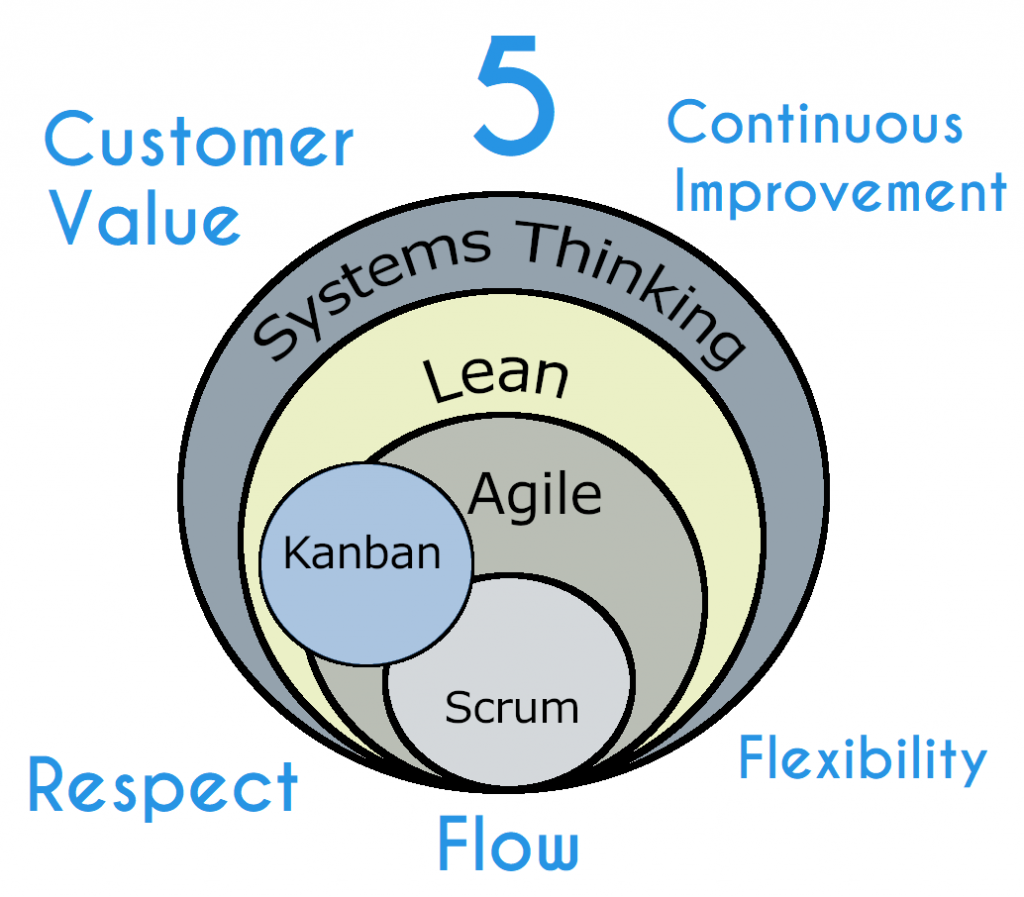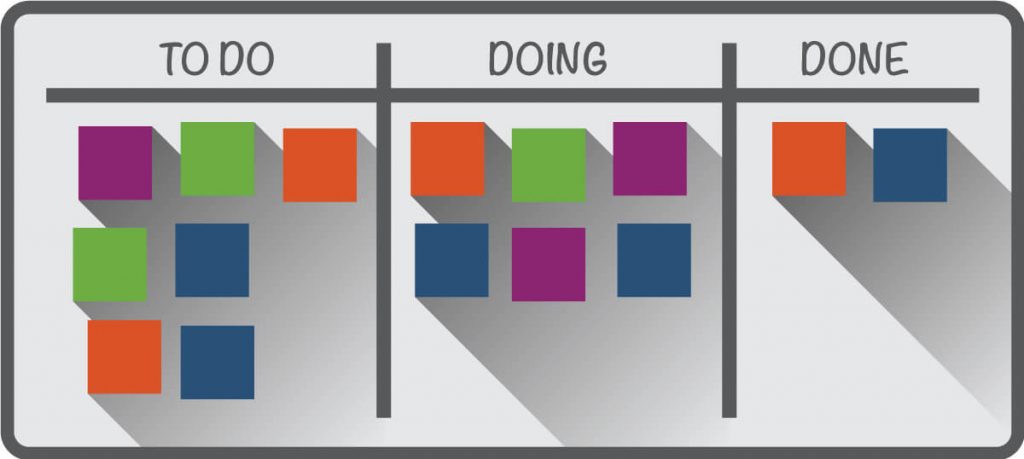Lean East shares five similarities between Lean and Agile.
Readers of our blog will be familiar with Lean fundamentals. Many of you have completed improvement projects or attended workshops such as our ‘Introduction to Lean Thinking’ course. Readers of our blog are past or current clients, or people we have connected with in LinkedIn Groups. (We recommend Lean Six Sigma and Operational Excellence as great sources of information and energy).
Likewise, many of our readers know that the goal of Lean is to maximize customer value by minimizing non-value-added “waste” in processes. Lean changes the focus of management from optimizing separate technologies, assets, and vertical departments. Therefore, optimizing the flow of products and services across technologies and departments.
But what about Agile? Some members of our community have started to hear the whispering of ‘Agile’ in the hallway. That the new strategic initiative for their organization is to undergo ‘Agile Transformation.’ What is this Agile? Is it a new kind of Lean? Better? Enemy or Friend?
No worries, we love Agile thinking! Members of our team have experience with Agile, including Raija from her work as a Business Analyst. For example, she worked on a team providing software solutions to medicinal chemists and discovery pharmacologists.
No, Agile is not a threat. And no, Agile is not just for software.
Let’s take a quick look at the origins of Agile. Let’s also see how Agile and Lean are connected, synergistic, and share excellent sets of tools and values for Improvement.
Origins of Agile
Agile began with the creation of the Agile manifesto in 2001 by a group of software developers who were seeking to uncover better methods of software development. Any software development process that aligns with the concepts in the manifesto can be termed “Agile.”
Agile presents a transformative way of thinking and a way to curb the monumental and growing list of failed software projects. It is a set of tools and techniques and also a fundamental way of looking at people, communication, collaboration, and the way teams work.
A set of tools & techniques AND and a philosophy. A lot like how we talk about Lean. Let’s look closer.
Agile and Lean
Agile software development follows many core Lean concepts. Over the past 15 years, as organizations adapt and improve their agile methods, they seem to be following more Lean principles. Below are five similarities between Agile and Lean that we identify.

1. A focus on customer value
In truly Agile organizations, everyone is passionately obsessed with delivering increasing value to the customer. Everyone has a clear line of sight to the end-user and can see how their work is adding value to that customer, or not. Agile focuses on collecting customer “user stories” that describe specific features and outcomes they value. It is important that the team discuss the user stories and epics in the language that captures the needs of the customer, not the developers or designers.
2. Continuous improvement
Agile methods focus on breaking up complex development projects rather than planning a massive project up-front (not waterfall). In Agile, several user stories will be focused on in a single “sprint.” This is a focused development cycle that results in a usable customer feature. Complex user stories with multiple features and benefits are “epics” and take multiple sprints to complete.
Sprints are typically only 1-2 weeks long so that teams can shorten the learning cycle and continually adjust plans in response to the outcomes of the sprint and customer feedback. Agile, therefore, avoids the long design and development cycle where the end-product needs have changed over the course of the project. It is in the same way that Lean focuses on many iterations of improvement resulting in a large gain.
3. An emphasis on flexibility versus (authority-based) control
Agile was developed to enable organizations to cope with continuous change in an increasingly complex world. Successful organizations are nimble, adapt quickly to changing customer needs, competition and markets, and have matrixed organizational structures.
A matrixed organization requires a new way of thinking about authority and the lines of accountability and approval. It demands that skilled teams have the ability to make decisions when appropriate.
Another common feature of the agile process is a daily scrum (15-minute huddle) for the development team (not management) to review the current sprint. In this structure, the team discusses the work at hand and prioritizes what needs to be done, with a keen eye on why each item of work has value and priority. Here are the keys to a typical scrum:
- Keep the stand-up meeting no longer than 15-minutes in length. Literally standing up helps!
- Every team member answers these three questions:
- What have you accomplished since the last meeting?
- What are you working on until the next meeting?
- Are there roadblocks preventing you from doing your job?
- Review your project management tool (or Kanban board) during the meeting to keep work aligned.
For more on this topic read our post Team of Teams about the structure that US General Stanley McChrystal used to make important and nimble battlefield decisions.
4. The continuous flow of results
Agile is about working smarter, rather than harder. It’s not about doing more work in less time, it’s about generating more value with less work. We believe that Agile mirrors the flow principles of Lean that have proven to be successful. This is a good thing!
Each agile sprint tackles user stories and should result in completed new features. Note that documentation, testing, and user-interface requirements are all typically built into the sprint and not saved for later in the process. This allows for quicker customer feedback and more accurate documentation.
Sprints also minimize some of the “batching” that is typical of a long development process. This is close to what Lean considers “continuous flow.” Some recent Agile methodologies are even based on the Lean just-in-time concept of Kanban (defined as “signboard” in Japanese).

The benefits of Kanban in Agile are the same as in Lean. Improved efficiency through quicker feedback and minimized work-in-progress inventory.
5. Respect for people
The Agile manifesto puts emphasis on “Individuals and interactions over processes and tools.” These high-performing teams consist of individuals who are each respected and counted upon to complete their self-selected assignment.
And so, Agile scrum teams are not bureaucratic and development team members are not treated like machines. In this way, Agile embraces the Toyota Production System popularized tenant of “Respect for People” as a key to the methodology.
Agile attempts to “disrupt the silos” in organizations and directly connect developers with users (customers). Organizations must trust their developers and be willing to disrupt the chain-of-command for Agile to work.
Other similarities between Lean and Agile?
Lean East would love to hear from some of the “Scrum Masters” and “Agile practitioners” in our network. What are some other key principles of Agile that relate to Lean?
The just-in-time method of Kanban has recently been incorporated into many Agile processes. What Lean tool or concept do the Lean Black Belts in our network think will be next?


Related Posts
The God Complex: Why We’re All Making This One Mistake
How I am Changing the Career Advice I Give My Kids
This is Never Going to Work: Getting Lean Projects Unstuck